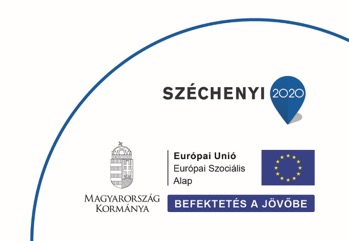A tool that ensures individual progress, supports the work of teachers, complements and at the same time has fun skills and competence development is in the hands of children these days. We are inundated with digital gadgets, there are already smart boards in many places, mobiles in our pockets, but how can the compulsion of children to “push” be taken advantage of?
The potential of IT tools is developed into a class and teacher-friendly consortium of three members. In the small villages of Baranya County, teachers and then students will start using the Tanlet educational support application in October, said Erzsébet Kiss, professional leader and president of the New Chance Public Benefit Association.
As a result of several years of development, an application has been created that breaks with entrapment. Even on a smart board, there is one person and one device in focus. The lesson is still frontal. Tanlet , on the other hand, provides individual progress under teacher guidance. Everyone individually uses their mobile device to complete tasks at a level and speed that suits their own abilities.
- But what makes it different from other computer educational games?
- Students and educators put the app together. The children invented the figures and the playfulness was tailored to them as well. The sample tasks were prepared together with the teachers during the development and test period. It has a novelty for students compared to school habits, and the possibility of differentiation and special control of management is a freshness for teachers.
- How many years would you recommend using it, at what hours?
- Tanlet is designed for ages 8-14, but previous tests have shown its effectiveness in ages 9-12. The children regularly asked their teachers, “when will they have a tablet lesson”? This is because the application can be run on a tablet or mobile phone. As part of our “ Help Learning ” program, which is now underway, we have the opportunity to purchase 200 tablets for children to work in class. Teaching sessions for teachers have already started.
- What is the reception of Learning among teachers? We regularly hear that teachers are overwhelmed, with a lot of administration, in-service training and hours. Were they open to further training, methods?
- We started the in-service training with teachers from Hungary and the attitude is clearly positive. They see their own benefits in the Tanlet app. Its flexibility simplifies lesson preparation, lesson outlines, and documentation of feedback, meaning administrative burdens don’t increase either, while playful, colorful sessions make their own lessons more colorful. Children, if they love the task, also have less discipline on the part of the teacher. The program starts with a total of 120 students and their teachers.
- At what time, in what subject framework should you use the tool?
- It’s important to emphasize that Tanlet is not a substitute for a lesson, but a development of competencies. That is why almost any watch can be added to it. For example, you can even insert related comprehension and picture matching tasks into a mammal curriculum, or you can play a good deal with year numbers in a history lesson. Basically suitable for group work, for kindergartens, schools. It’s also good for afternoon daytime sessions when the attention is a little fading. To summarize part of the curriculum, testing is also appropriate, or in the weeks before the breaks, when the children’s attention is more difficult to maintain than average. It is important to spend at least 20 minutes on each block. You can try the app individually, but the uniqueness of the method just builds for community use.
Tanlet can be downloaded from the Google Play store and the App store, and educators can sign up for more content at www.tanlet.com < / a> page. The implementation of the program is made possible by the EFOP co-financed by the European Union.


